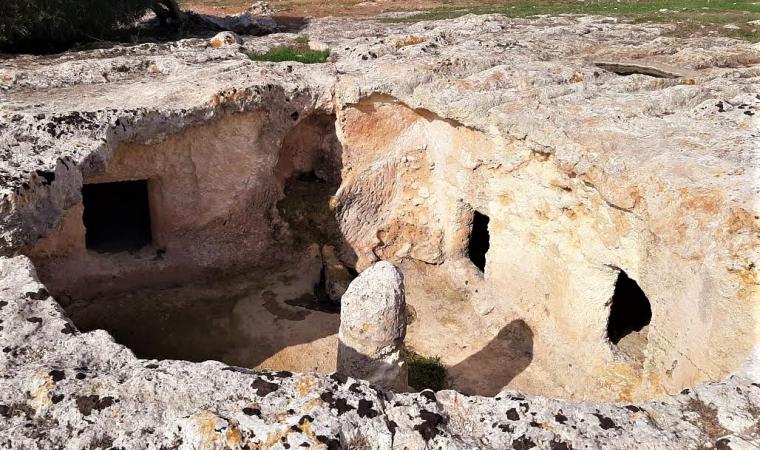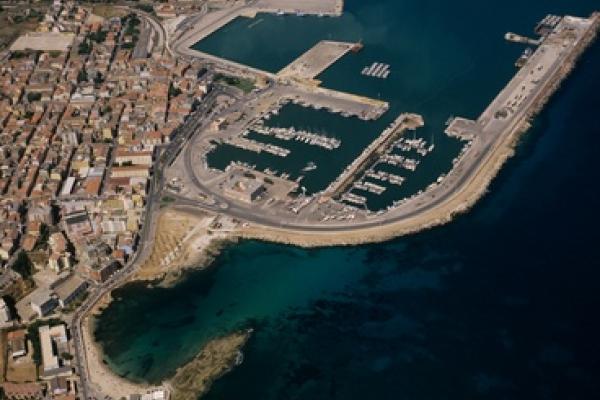The Nurra is a ‘mine’ of heritage from the past, with a concentration of dozens of archaeological sites spread over a few square kilometres. One of the most fascinating is located just outside the town of Porto Torres and is partially hidden, maybe to continue to protect the secrets it has been keeping for thousands of years. It is the necropolis of su Crucifissu Mannu, a complex of domus de Janas dug out of a bank of limestone rock. 22 tombs have been found so far. Their construction began in the Late Neolithic period (3200-2800 BC) and were used continuously until the Early Bronze Age, around the 16th century BC. Since 2025, the site has been included—together with 16 other necropolises—in the list of Sardinian sites designated as Unesco World Heritage.
The hypogea are all multi-cellular, meaning that they are composed of several rooms, which can be accessed via a vertical well or descending dromos (corridor) entrance. The structure is typical of the domus found in the Sassari area, with an anteroom, a cell and rooms that open up in the walls of the main cell.
Three tombs in particular will leave a lasting impression on you: tomb VIII has two small rooms at the end of the dromos, followed by a large quadrangular cell and ten other rooms around it. A door opens up on one wall, above which there are two inscribed protomes. Tomb XII has 15 rooms, organised in a complex manner: some burial chambers are located at an opening on the right wall of the anteroom and others around the main cell beyond the door, of which you will notice the manhole cover still lying on the threshold. Tomb XXI will surprise you with its decorations: in fact, there are bull’s heads with crescent-shaped horns in the various rooms, as well as false doors and traces of columns supporting the vaults.
Inside the necropolis, numerous burial objects were found, useful for accurately dating human presence in the necropolis, and also skeletal remains, two of which showed signs of drilling on the skull. This was not an operation carried out on the dead, because in at least one case the person survived the mysterious practice. Several hypogea have lost their roofs, due to caving on the surface above, caused by the passage of the road connecting Turris Libisonis and Karales (the Roman ancestors of Porto Torres and Cagliari). Another enigma concerning su Crucifissu Mannu is also linked to the road and is represented by a series of straight furrows cut into the rocky surface. The most likely scenario is that they were caused by Roman carts that transported blocks of limestone to the port, following a change of route due to collapses in the necropolis. According to another theory, however, they could date back to the Nuragic age and are linked to rituals that are still unknown. On the subject of mysteries and religiousness, less than six kilometres from the necropolis, you can admire a temple, unique in Europe, at ziqqurat in Monte d’Accoddi, a majestic and almost contemporary sacred altar at su Crucifissu Mannu.


















